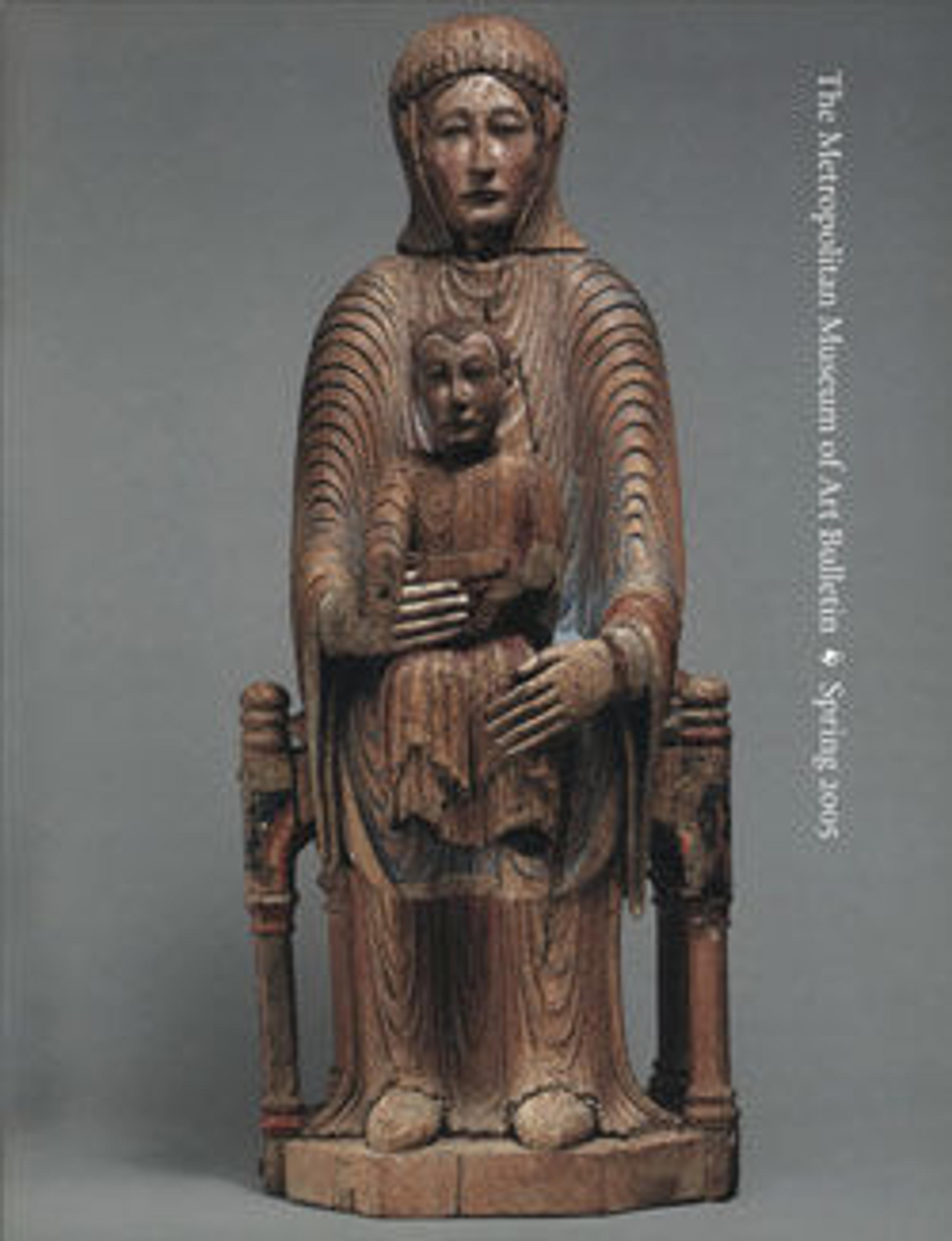Pectoral with Christ and the Lamb of God and the Symbols of the Four Evangelists
This imposing ivory originally formed the central part of a large cross (the arms are now missing) intended to be suspended from the neck. The strong sculptural forms and animated drapery relate closely to both Anglo-Saxon drawings and illuminated manuscripts. The pairing of Christ in Majesty with the Lamb of God on the reverse reflects contemporary interest in apocalyptic imagery, familiar from the Book of Revelation.
Artwork Details
- Title: Pectoral with Christ and the Lamb of God and the Symbols of the Four Evangelists
- Date: 1000–1050
- Geography: Made in near Saint-Omer
- Culture: British or North French
- Medium: Walrus ivory with gilt-copper sheets and copper alloy pin
- Dimensions: Overall: 5 7/8 x 2 1/2 x 1 3/8 in. (14.9 x 6.3 x 3.5 cm)
width with iron pins: 2 11/16 in. (6.9 cm) - Classification: Ivories-Walrus
- Credit Line: Gift of J. Pierpont Morgan, 1917
- Object Number: 17.190.217
- Curatorial Department: Medieval Art and The Cloisters
More Artwork
Research Resources
The Met provides unparalleled resources for research and welcomes an international community of students and scholars. The Met's Open Access API is where creators and researchers can connect to the The Met collection. Open Access data and public domain images are available for unrestricted commercial and noncommercial use without permission or fee.
To request images under copyright and other restrictions, please use this Image Request form.
Feedback
We continue to research and examine historical and cultural context for objects in The Met collection. If you have comments or questions about this object record, please contact us using the form below. The Museum looks forward to receiving your comments.
